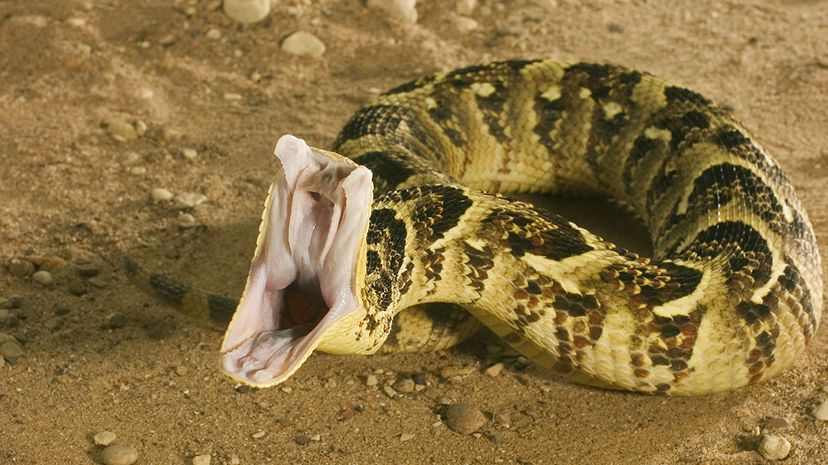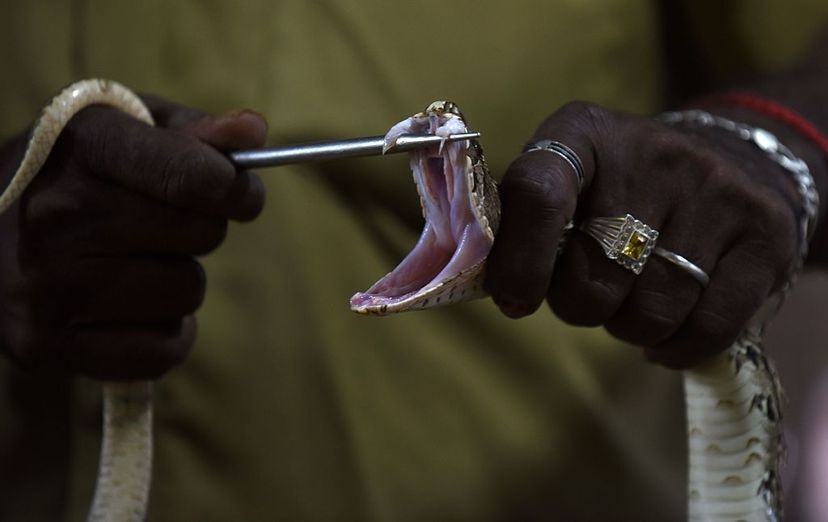
By all accounts, being bitten by a venomous snake is painful, dangerous and terrifying. But did you know it's also astronomically expensive? In 2015, the treatment for one California man's rattlesnake bite in the United States cost more than $150,000, with the bulk of that accounted for in pharmacy charges. That high ticket is because treatment for a bite from a venomous snake often requires six to eight vials of antivenom at around $2,300 a pop. The same year, a Missouri man died after being struck twice by a venomous snake because of his refusal to pay the high price of hospital care. But in an age where we're able to mass-produce so many types of pharmaceuticals, why does it cost so much to treat a snakebite?
According to one 2015 study in the American Journal of Medicine, it doesn't have to be this way. True, the process of making antivenom is a bit convoluted: it involves injecting sheep with snake venom and harvesting and processing the resulting antibodies made by their immune systems. And the treatment of venom injuries is a tiny field — combined stings and bites from venomous lizards, snakes, scorpions and spiders reported in the U.S. amount to fewer than 50,000 cases each year — which makes the manufacture of antivenom a bit of a boutique industry. And the field is shrinking, too, with companies halting production of once-common, lifesaving drugs. But the research group from the University of Arizona found that while a vial of antivenom made by the leading North American manufacturer could run a snakebite victim between $7,900 and $39,652 in a hospital in Arizona, someone across the border in Mexico would only pay $100 for a medicine made by the same company, in the same factory.
Advertisement

So the true cost of making antivenom in the U.S. has to do with the pharmaceutical market, and not the complexity of the manufacturing process. In fact, if bitten by a venomous snake and seeking aid, only around 0.1 percent of what we pay actually goes toward making the antivenom. The rest of that money goes toward things like clinical trials, legal costs, hospital fees and U.S. Food and Drug Administration fees. And the high price of prescription medication in the United States is not unique to antivenom.
On the bright side, industry analysts say that U.S. antivenom prices may drop in 2018 when a new drug called Anavip should arrive to market.
This is all very unfortunate, but in some places in the U.S., snakebites are on the rise, which means more people will be suffering from antivenom sticker shock than usual. In Georgia, for instance, a balmy winter has led to copperhead snakes coming out earlier than normal, leading to the Georgia Poison Center getting 60 percent more calls than they did last year at this time.
Advertisement
